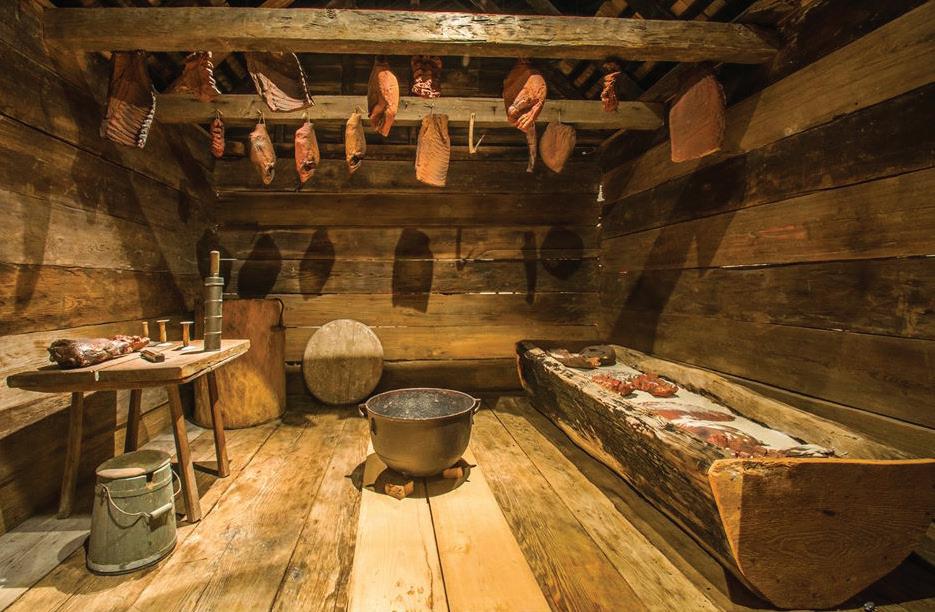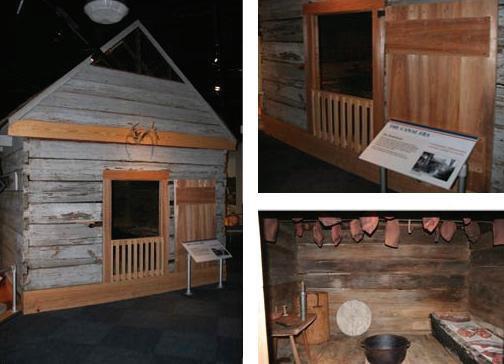
2 minute read
The Proctor Smokehouse, Circa 1840s, Perquimans County
By Barbara Putnam, Operations Manager
In Museum of the Albemarle’s second floor gallery sits the restored Proctor Smokehouse. The smokehouse was initially located on the Proctor Farm in the Bear Swamp area of Perquimans County, an area often considered to be one of the earliest permanent settlements of people in North Carolina. The smokehouse was eventually moved to the Newbold-White House in Hertford (also in Perquimans County), where it was damaged by a limb that fell on its roof during Hurricane Isabel in 2003; afterward, the building was offered to the museum for exhibit.
The Proctor Smokehouse, built from locally harvested native cypress, was disassembled and transported to a building for fumigation, then moved, reassembled, and restored inside the museum—a process that took more than six months. Preservation work uncovered complex and advanced construction techniques and carpentry skills that had been passed down from generation to generation and revealed that the building might be one of the earliest and oldest surviving examples of the squared-timber and fully-dovetailed smokehouses once used by early settlers in the state.

Courtesy of Museum of the Albemarle
Smokehouses were important to people who wanted to have pork available all year long, as most early families in North Carolina did. Settlers preserved and protected meat in smokehouses, which were enclosed, without windows or a flue. Meat, first packed in tubs of coarse salt for about six weeks to draw most of the moisture from the meat, was hung in smokehouses for one to two weeks while smoke from a low-burning fire smoldered, preserving and flavoring the meat. The result was dried, long-lasting, smoke flavored meat that could hang safely stored from vermin and thieves.









